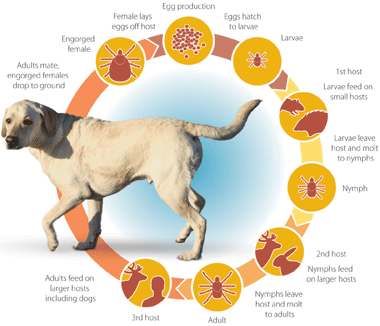How Do Dogs Get Lyme Disease: Causes And Prevention Tips
Symptoms Of Lyme Disease In Dogs- And Why It’S So Dangerous – Professional Dog Training Tips
Keywords searched by users: How do dogs get Lyme disease Lyme disease in dogs, Anaplasma in dogs, E canis in dog, Treatment of blood parasites on dogs, Parasite in dog, Hip dysplasia in dogs, Distemper disease in dogs, Ear infections in dogs
Can Dogs Get Lyme Disease Without A Tick Bite?
Can dogs contract Lyme disease without being bitten by an infected tick? Lyme disease is primarily transmitted to humans and animals via the bite of infected blacklegged ticks, commonly known as deer ticks. These tiny parasites carry the bacteria responsible for Lyme disease. However, it’s essential to note that while tick bites are the primary mode of transmission, there are other potential, though less common, means of infection. These can include transmission from mother to offspring during pregnancy, through blood transfusions, and, although very rare, through contact with contaminated equipment used for blood work or surgery. Therefore, while tick bites are the most prevalent source of infection in dogs, it’s essential to be aware of these other transmission routes to ensure comprehensive prevention and treatment strategies.
Is Lyme Disease Curable In Dogs?
Is Lyme disease curable in dogs? Fortunately, Lyme disease in dogs can be effectively treated. This illness is caused by a bacterium transmitted through tick bites. The primary course of treatment involves antibiotics, which typically span a four-week period. However, it’s important to note that some dogs may need extended treatment beyond this initial duration. As of May 26, 2022, this information remains current and applicable to managing Lyme disease in dogs.
How Does Lyme Disease Happen In Dogs?
Lyme disease in dogs is primarily triggered by an infectious bacterium known as Borrelia burgdorferi, specifically classified as a spirochete. This disease is transmitted to canines through the bite of a tick that carries the bacterium. When an infected tick bites a dog, it introduces the Borrelia burgdorferi bacterium into the dog’s bloodstream. Once in the bloodstream, this bacterium can spread throughout the dog’s body and is prone to concentrating in specific areas, often targeting joints and kidneys. This migration and localization within these organs can result in the characteristic symptoms and health issues associated with Lyme disease in dogs.
Details 8 How do dogs get Lyme disease



:max_bytes(150000):strip_icc()/tick-virus-980a9c0a2e084045a8ac9b0ab93b1b92.jpg)
Categories: Share 28 How Do Dogs Get Lyme Disease
See more here: c1.cheerthaipower.com

Dogs may develop Lyme disease from the bite of a blacklegged tick, which may transmit bacteria known as Borrelia burgdorferi. Once ill, dogs can become feverish and lame in one or more joints. They also may exhibit sluggishness, and their lymph nodes may swell.The bacteria are transmitted to humans and animals through the bite of infected blacklegged ticks, such as deer ticks.The good news about Lyme disease in dogs is that it can be cured. Because Lyme disease is caused by a bacterium that’s passed from ticks to your dog, it can be treated with antibiotics. In most cases, Lyme disease can be treated with 4 weeks of antibiotics, but some dogs may require additional treatment.
- Fever.
- Loss of appetite.
- Reduced energy.
- Lameness (can be shifting, intermittent, and recurring)
- Generalized stiffness, discomfort, or pain.
- Swelling of joints.
Learn more about the topic How do dogs get Lyme disease.
- Lyme disease in dogs: 5 things pet owners should know
- Lyme Disease | Cornell University College of Veterinary …
- Lyme Disease In Dogs: Signs, Treatment, & Prevention – Dutch Pet
- Lyme Disease in Dogs – VCA Animal Hospitals
- Lyme Disease in Dogs: Symptoms, Testing, Treatment, and …
- Lyme Disease | Cornell University College of Veterinary Medicine
See more: blog https://c1.cheerthaipower.com/category/calculators